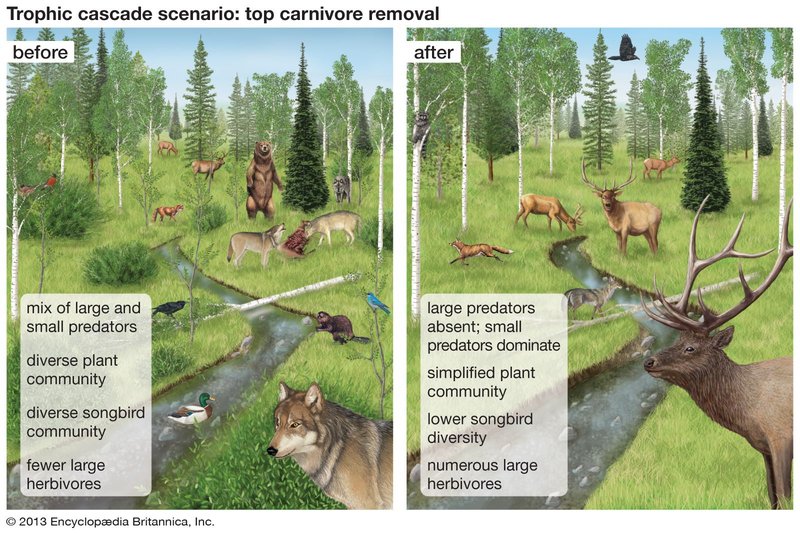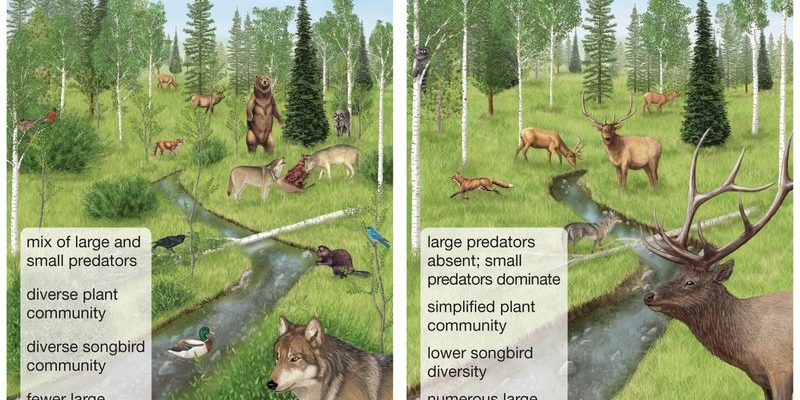
Just like in a good movie plot, where the hero faces challenges from unexpected foes, wolf worms encounter their own set of disruptors. Let’s dive into this fascinating cycle of life, where small creatures play significant roles in the ecosystem. You might find the relationship between wolf worms and their predators as dramatic as any blockbuster film!
What Are Wolf Worms, Anyway?
Wolf worms are a type of parasitic larvae that primarily target mammals, especially canines. Think of them as an unwanted guest that takes advantage of their host. Typically, these larvae end up in the intestines of animals, where they feed and grow, causing various health issues. Just like how some guests overstay their welcome, wolf worms can lead to discomfort, illness, or even fatality for their host.
One way to visualize wolf worms is to picture a tiny, squirming worm that gets nestled in a warm, cozy environment. While that may sound comfortable for the worm, it’s bad news for the animal that hosts it. This relationship can have significant repercussions for wildlife populations, which is where their natural predators come into play.
So, why should we care about wolf worms? They serve as a reminder that even the tiniest creatures can affect entire ecosystems, reminding us of the delicate balance in nature. Understanding who disrupts their development helps paint a clearer picture of overall wildlife health.
Natural Predators of Wolf Worms
Many species in the ecosystem play roles as natural predators of wolf worms. These creatures are like nature’s cleanup crew, keeping the wolf worm population in check. Here are some of the main characters in this story.
- Birds: Certain birds, like crows and sparrows, are known to eat worms in general, including wolf worms. These feathered friends act like nature’s alarm system, signaling when there’s a population surge.
- Insects: Ground beetles and other insect predators often feast on larvae, including the wolf worm variety. Their role is quite significant, as they help maintain the balance within the soil ecosystems.
- Small Mammals: Animals like moles and shrews also play their part by digging up the soil where wolf worms burrow, enjoying them as a meal.
- Amphibians: Frogs and toads have a keen appetite for small worms and larvae. Their presence in an area indicates a healthy predator-prey relationship.
These natural predators help disrupt the development of wolf worms and ensure that wildlife remains healthy and balanced.
The Role of Birds in Disrupting Wolf Worm Development
Birds might be small, but their impact is massive. When it comes to disrupting wolf worm development, birds like crows and sparrows are the unsung heroes of the ecosystem. Imagine them soaring through the sky, always on the lookout for a tasty meal. They have sharp beaks and quick reflexes, making them efficient worm hunters.
Birds also play an essential role in controlling the overall population of wolf worms. If a specific bird species thrives, it can naturally limit the number of wolf worms that proliferate. This relationship indicates how intertwined their lifestyles are, reflecting a delicate ecosystem balance.
Plus, when birds prey on wolf worms, they prevent these larvae from maturing and infesting more animals. It’s like they’re the guardians of the forest, keeping the unwanted guests at bay.
Insects as Unseen Warriors Against Wolf Worms
Insects are often overlooked, but they perform crucial tasks in nature. Ground beetles, for example, act as silent assassins against various larval species, including wolf worms. Not only do they eat these pesky pests, but they also aerate the soil while digging, which helps other plants and animals thrive.
Here’s something interesting: these insects tend to prefer moist environments, so you’ll find them in areas where wolf worms are also likely to thrive. This natural competition helps maintain a balance between different species.
Insects also reproduce quickly, which means that if the wolf worm population spikes, so can their insect predators. It’s a race that ensures the ecosystem remains healthy and sustainable.
Small Mammals: Nature’s Ground Control
Moles and shrews might be less glamorous than birds, but they’re equally important players. These little mammals spend a lot of time underground, navigating the soil where wolf worms reside. Picture them with their twitching noses, always sniffing out snacks hidden beneath the surface.
By digging through the soil, small mammals disturb wolf worms’ habitats. They’ll munch on these larvae when they find them, disrupting not just the worms’ growth but also the overall population dynamics. In a way, they can be seen as the earth’s natural landscapers, ensuring that what lies beneath is healthy and in balance.
Also, these mammals contribute to the health of the soil, benefiting plants and other life forms. It’s quite a symbiotic relationship—they help each other thrive while keeping predators like wolf worms in check.
Amphibians: The Slimy Predators
Frogs and toads often don’t get as much attention, but they’re essential in the fight against wolf worms. These amphibians love to eat small invertebrates, and that includes larvae like wolf worms. If you’ve ever seen a frog leaping to catch a fly, you know they have the skills to snatch up fast-moving snacks.
The presence of amphibians in an area is a strong indicator of a healthy ecosystem. They require clean water sources and plentiful food, meaning they thrive in environments where wolf worms and their predators can coexist.
Here’s the thing: if the wolf worm population becomes too high, frogs and toads will flock to eat them, naturally regulating the numbers. It’s a reminder of how interconnected life is—even the slimiest of creatures has a vital role to play!
Why This Matters for Ecosystem Balance
Understanding how natural predators disrupt wolf worm development isn’t just for nature enthusiasts; it’s crucial for everyone. Think about it: when you change one piece of the puzzle, the entire ecosystem can shift.
If wolf worms proliferate unchecked, they can cause significant issues for other wildlife. Animals become weakened, leading to increased mortality rates. This imbalance can ripple throughout the food chain, potentially affecting larger predators and, ultimately, human communities that rely on these ecosystems.
By maintaining the predator-prey balance, we’re ensuring the wellness of entire ecosystems. Protecting predators like birds, insects, small mammals, and amphibians can help keep wolf worms at bay, which is beneficial for everyone involved.
When you look closely, it becomes clear that every creature, big or small, has a role in the grand dance of nature. The natural predators of wolf worms demonstrate just how interconnected our ecosystems are. Whether it’s the birds soaring above or the insects scuttling below, these organisms maintain a balance that’s vital for the health of wildlife.
By understanding these relationships, we can appreciate the complexity of nature and take steps to protect it. After all, keeping wolf worms at bay through their natural predators is not just a matter of animal health; it’s about ensuring our environment remains vibrant and thriving for generations to come. So next time you’re out in nature, remember this intricate network and how every little being contributes to the bigger picture.

